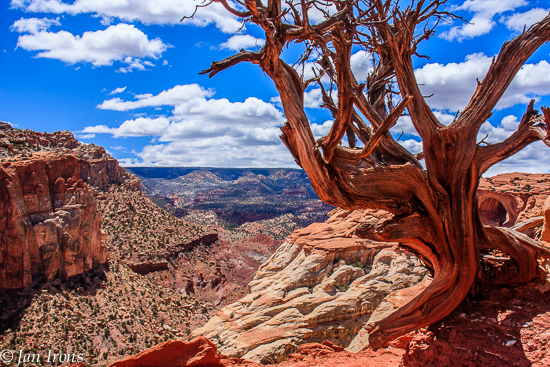Refrigeration in general can be a challenge on a boat. If you’re like me, you have a pit for a refrigerator. Being short, reaching something in the very bottom often requires standing on my head with my feet dangling off the cabin sole. Luckily I also have a “cooler” — the compartment beside the refrigerator that apparently began life as an ice cooler – there’s a door on the front, a lid on the top and a drain hole in the bottom that drains ice water to the bilge.
We drilled holes through the wall from the refrigerator and now we have a larger section of “cooler” – not as cold as the refrigerator, but an in between area that does well for some veggies (cabbage, squashes, green onions, some herbs, tomatoes, etc.). I can keep carrots and radishes over there too, but I have room in the refrigerator most times, so they stay in the refrigerator. Only the less hardy veggies and fruits need storage in the actual refrigerator.

Now that we’re back in the U.S. (at least temporarily), storing veggies and fruit is different than while we were out cruising. Out cruising most of our produce was purchased in local markets, farmer’s markets or directly off the back of an old rusty pickup truck. Currently, while we frequent farmer’s markets as often as possible, most of our produce comes from a grocery store. Often produce from a grocery store has been refrigerated at some time in it’s life, so it must remain refrigerated or it will go bad quickly.
In the bottom of the refrigerator (the V portion) we have drinks which provide a base for the next layer which is usually a couple tupperware type containers for leftovers. Then come the solid bottom plastic baskets with slotted sides for airflow. We use the baskets to contain anything that might easily get lost in the bottom of the V and never resurface and refrigerated produce.

The first thing I do when we return from the grocery store is take everything out of it’s original packaging, wash, clean, trim and repackage. On a recent trip to the grocery… the plastic cartons that the mushrooms and strawberries which are great to keep them from getting crushed, also require an amazing amount of space in my basket — I only have room for two of these white baskets, so it’s imperative that I can fit more than just one carton of strawberries. Hence despite the fact that ideally, we’d leave the strawberries in their crush resistent packaging, they get washed, trimmed, halved and put into a freezer baggie for storage in the white basket.
Likewise the green onions are chopped, the red and green bell peppers get quartered, seeds removed and stored in a baggie. Radishes get washed, trimmed, halved and baggied. Grapes are washed, taken off their stems and baggied. And finally the mushrooms get washed, halved and stored in a baggie.
Admittedly, the baggies don’t protect the veggies/fruits from crushing like the original packaging, hence I need to be very careful with them in the refrigerator. And some people cringe at the thought of me pre-washing my mushrooms – they claim they won’t last once they’ve been washed and halved, but as long as they’re in the refrigerator side, I find they’ll last a week-ish.
Other major space bandits are the cauliflower and broccoli. They don’t seem to last as long in the cooler side, but in the refrigerator side they last as long as it takes us to eat them, which admittedly isn’t that long – a week maybe. They don’t go into the refrigerator before being chopped into florets and placed into baggies. Another tip – I usually try to use quart size baggies. If I have too much to fit in a quart size baggie as with grapes, cauliflower or broccoli, I put them in two quart baggies. The two smaller baggies fit better in nooks and crevices in baskets in the fridge.
Every cruiser does this differently – if you’re lucky enough to have a newer boat and a large rectangular refrigerator compartment, you have more options. So how do you handle delicate produce? Leave a comment and share — I’m always on the lookout for ways to make my fridge and food storage stretch, especially when we’re getting ready to leave to hopefully cruise for a few months. Cheers! J













Great, thanks for these tips. We just moved onto our 32ft Westsail 2 weeks ago and storing all the fresh produce in the fridge without it getting completely squashed or lost has been a nightmare. I might try doing this the next time I go shopping. It might take time to do, but no doubt it cuts back on cooking preparation time a little as well as saving frustration!